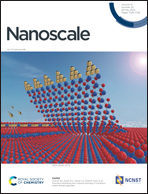Directed exfoliating and ordered stacking of transition-metal-dichalcogenides†
Abstract
Two-dimensional van der Waals crystals provide a limitless scope for designing novel combinations of physical properties by controlling the stacking order or twist angle of individual layers. Lattice orientation between stacked monolayers is significant not only for breaking the engineering symmetry but also for the study of many-body quantum phases and band topology. Thus far the state-of-the-art exfoliation approaches focus on the achievements of quality, size, yield, and scalability, while lacking sufficient information on lattice orientation. Consequently, interlayer alignment is usually determined by later experiments, such as the second harmonic generation spectroscopy, which increase the number of trials and errors for a designed artificial ordering and hampered the efficiency of systematic study. Herein, we report a lattice orientation distinguishable exfoliation method via gold favor epitaxy along the specific atomic step edges, meanwhile, fulfilling the requirements of high-quality, large-size, and high-yield monolayers. Hexagonal- and rhombohedral-stacking configurations of bilayer transition metal dichalcogenides are built directly at once as a result of foreseeing the lattice orientation. Optical spectroscopy, electron diffraction, and angle-resolved photoemission spectroscopy are used to study crystal quality, symmetric breaking, and band tuning, which support the exfoliating mechanism we proposed. This strategy shows the ability to facilitate the development of ordering stacking especially for multilayers assembling in the future.



 Please wait while we load your content...
Please wait while we load your content...